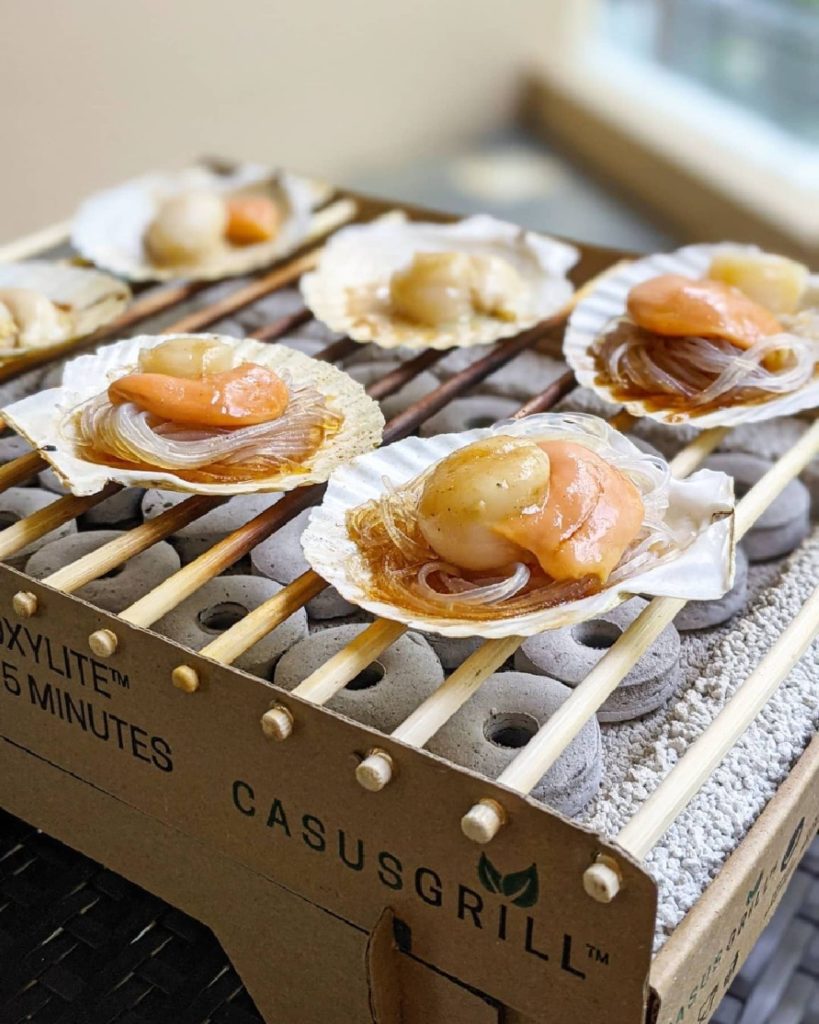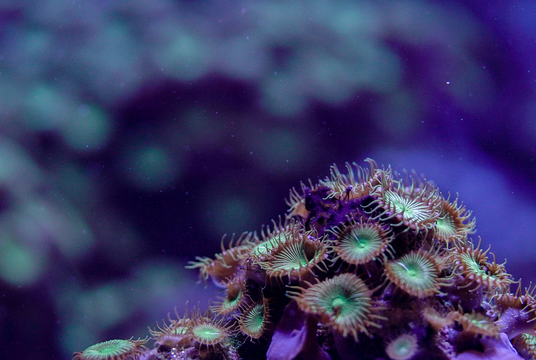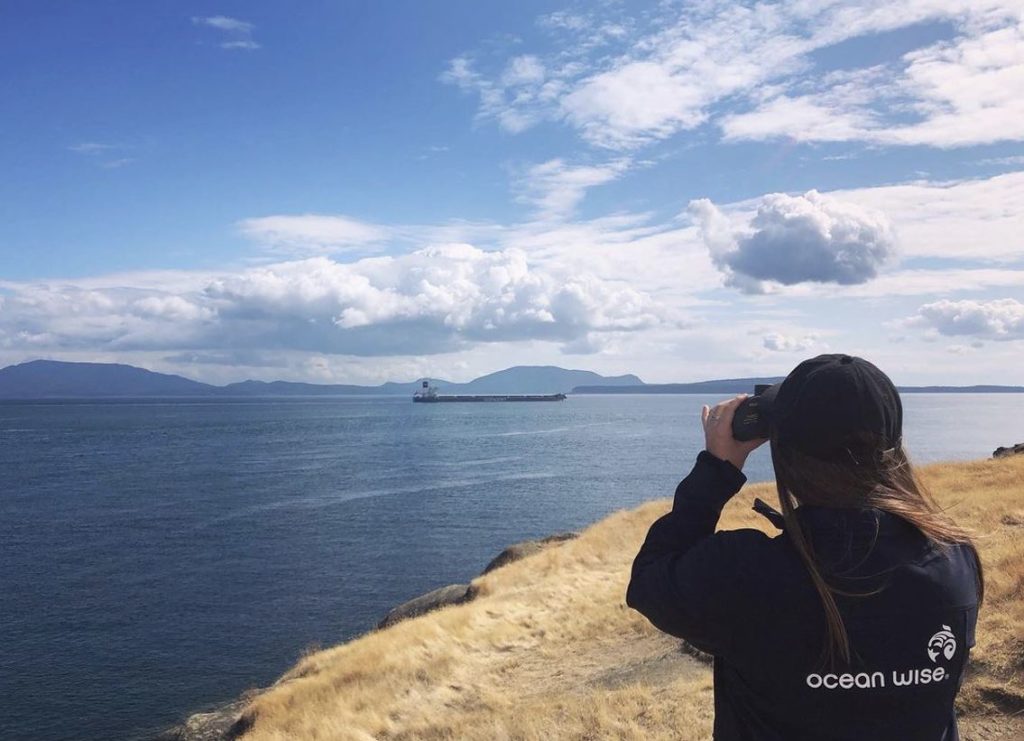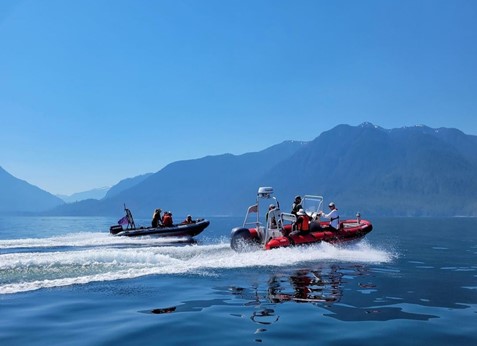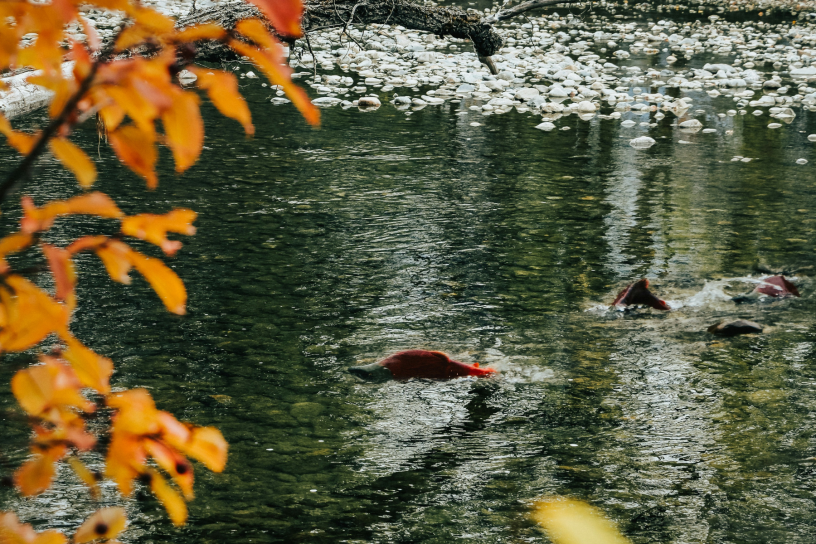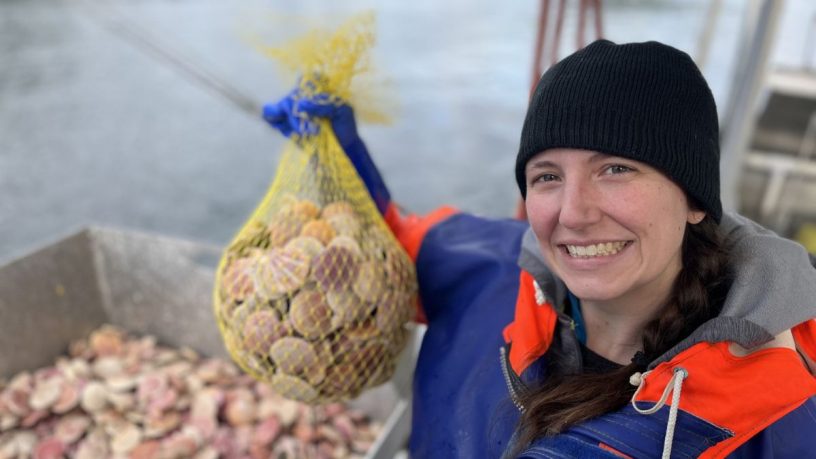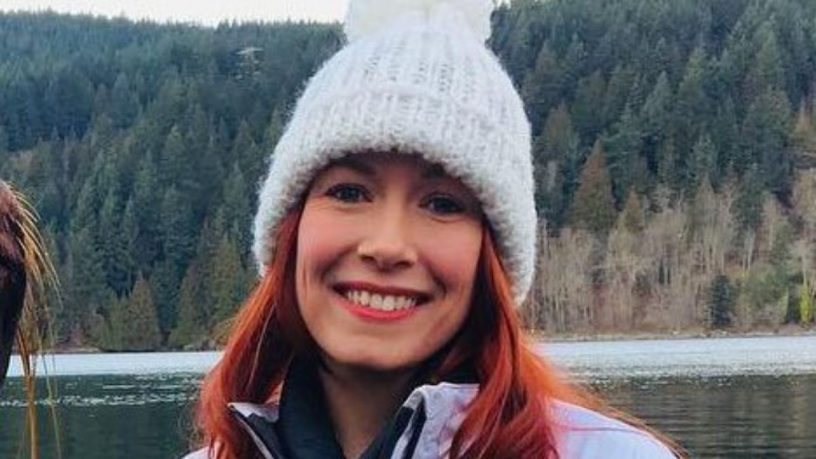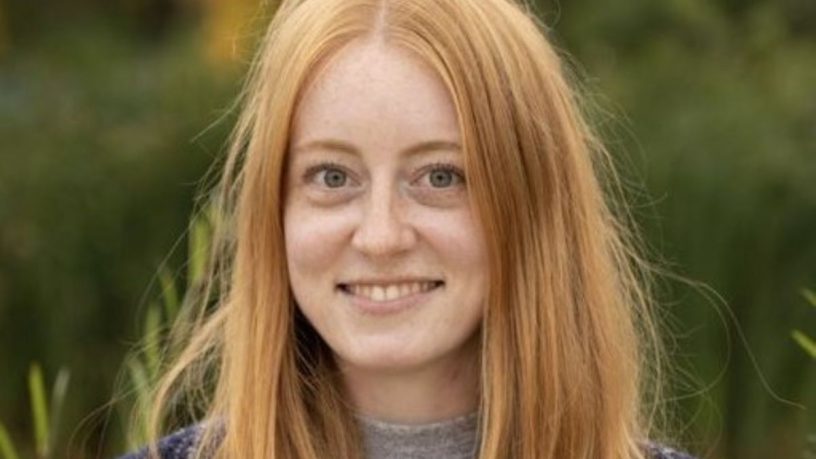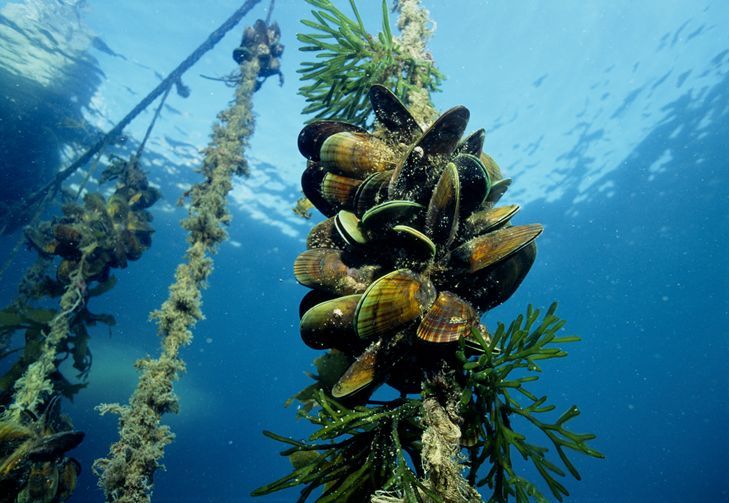
Sneak Peek: Restorative Food for the Future
Imagine a farm where farmers drive boats instead of tractors, create habitat rather than destroy it, and the farm itself actively cleans waterways and combats global warming. Imagine farm animals that don’t need to be fed, yet provide affordable, high-quality protein. This is restorative aquaculture.
Restorative aquaculture is the cultivation of low trophic level, filter-feeding species, such as kelp and bivalve shellfish (ex. mussels, clams, oysters), to positively affect ecosystem services. Restorative aquaculture systems have the potential to improve the environment, provide long-term job security for fishermen, and support healthy diets with complete protein and nutrient demands.
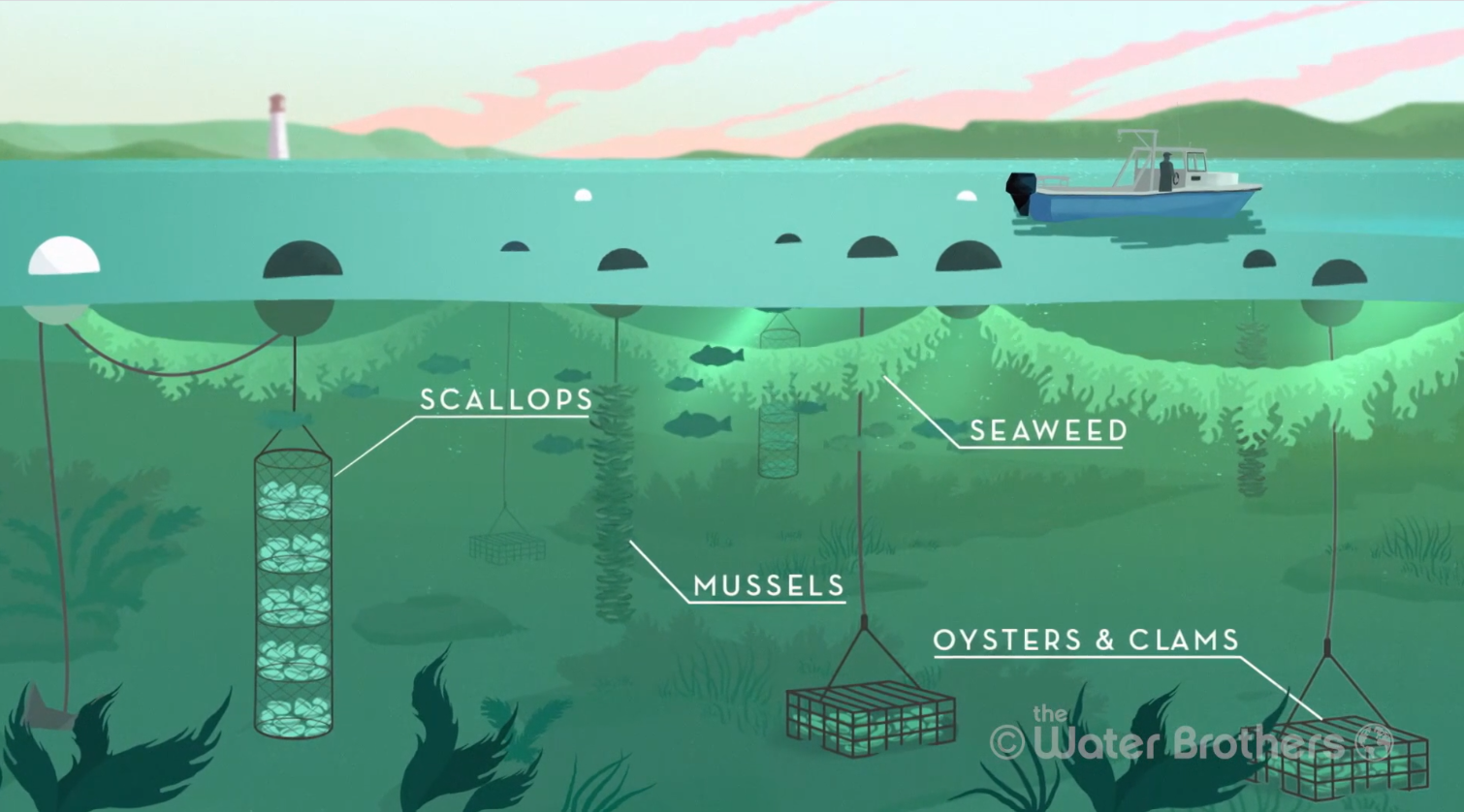
Unlike land-based farms that require large amounts of fertilizers, land, and freshwater, seaweed and shellfish require no inputs to grow. Instead, they survive off nutrients and food naturally found in the water column. Growing kelp and bivalves together is mutually beneficial; the bivalves improve water clarity by absorbing nitrogen and phosphorous. This allows more sunlight to reach the kelp. The kelp oxygenates the waterways and mitigates the effects of acidification, which helps the bivalves grow and maintain their calcium-carbonate shells.
Additionally, kelp forests act as carbon sinks for atmospheric carbon dioxide, absorbing 200x more carbon than the ocean, thus helping mitigate climate change. Finally, kelp and bivalve aquaculture increases local biodiversity by providing habitat structure and refuge for fish, crustaceans, and other invertebrates.
Eating kelp is good for the environment, and for you. Some species of seaweed have more vitamin C than citrus fruits, more vitamin D than milk, more iron than red meat and more protein than eggs and soybeans. Kelp is also high in iodine, which boost thyroid function and metabolism. Interestingly, fish get their omega-3’s from algae and kelp, so eating seaweed cuts out the intermediary. There are over 30 species of seaweed commonly eaten around the world, but they have yet to fully penetrate the Canadian market. That will require increased demand from people becoming more aware of its tremendous health and restorative environmental benefits. (Bonus: try our Kelp Brownie recipe!)
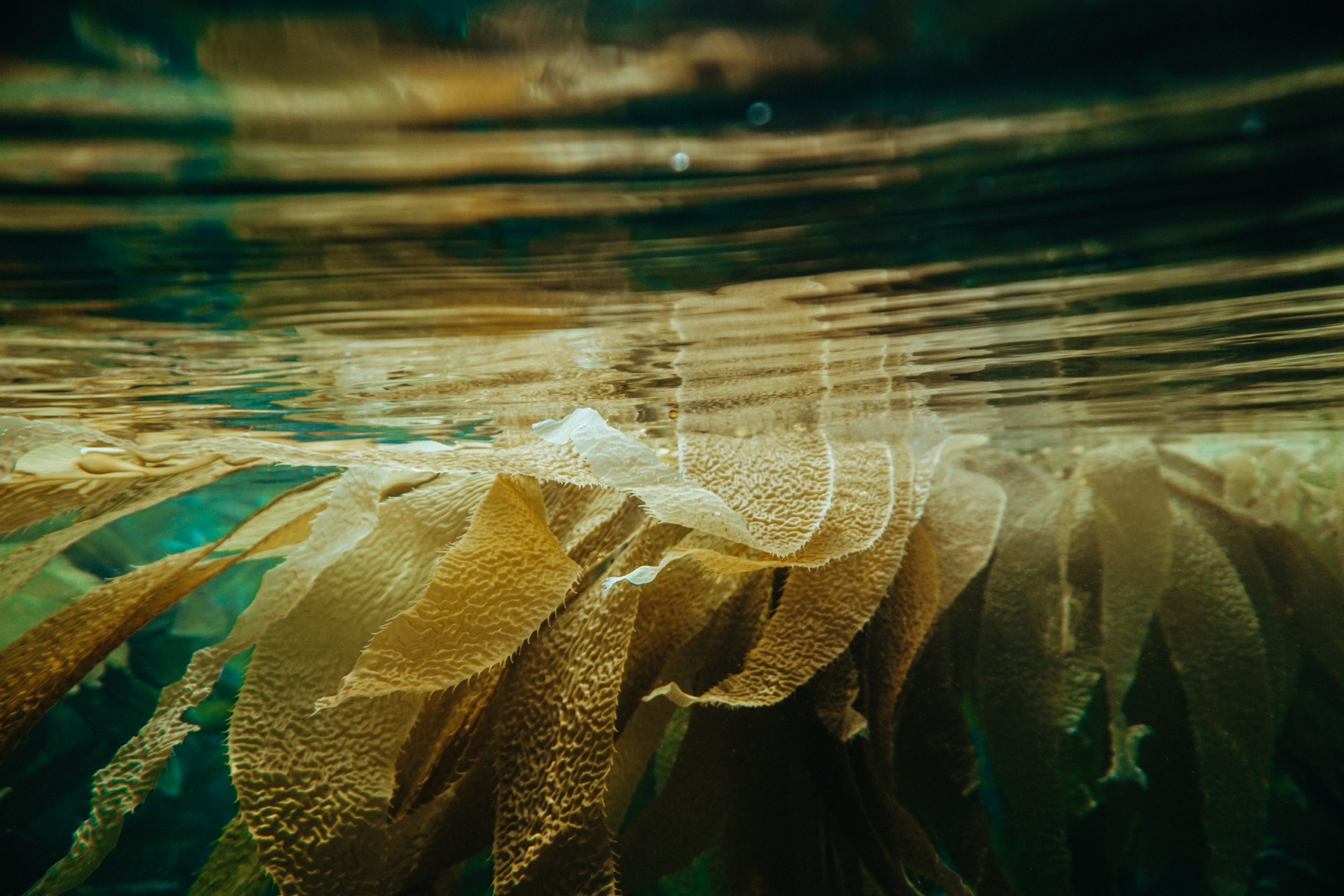
Despite slow growth in demand for seaweed dishes, there are still opportunities for kelp to be grown for fuel. For example, seaweed is being grown in polluted waterways to improve water quality and remove heavy metals from the water. The resulting kelp is not eaten, but instead converted into biofuel or fertilizer. In this way, seaweed farming can still offer employment and restorative environmental benefits.
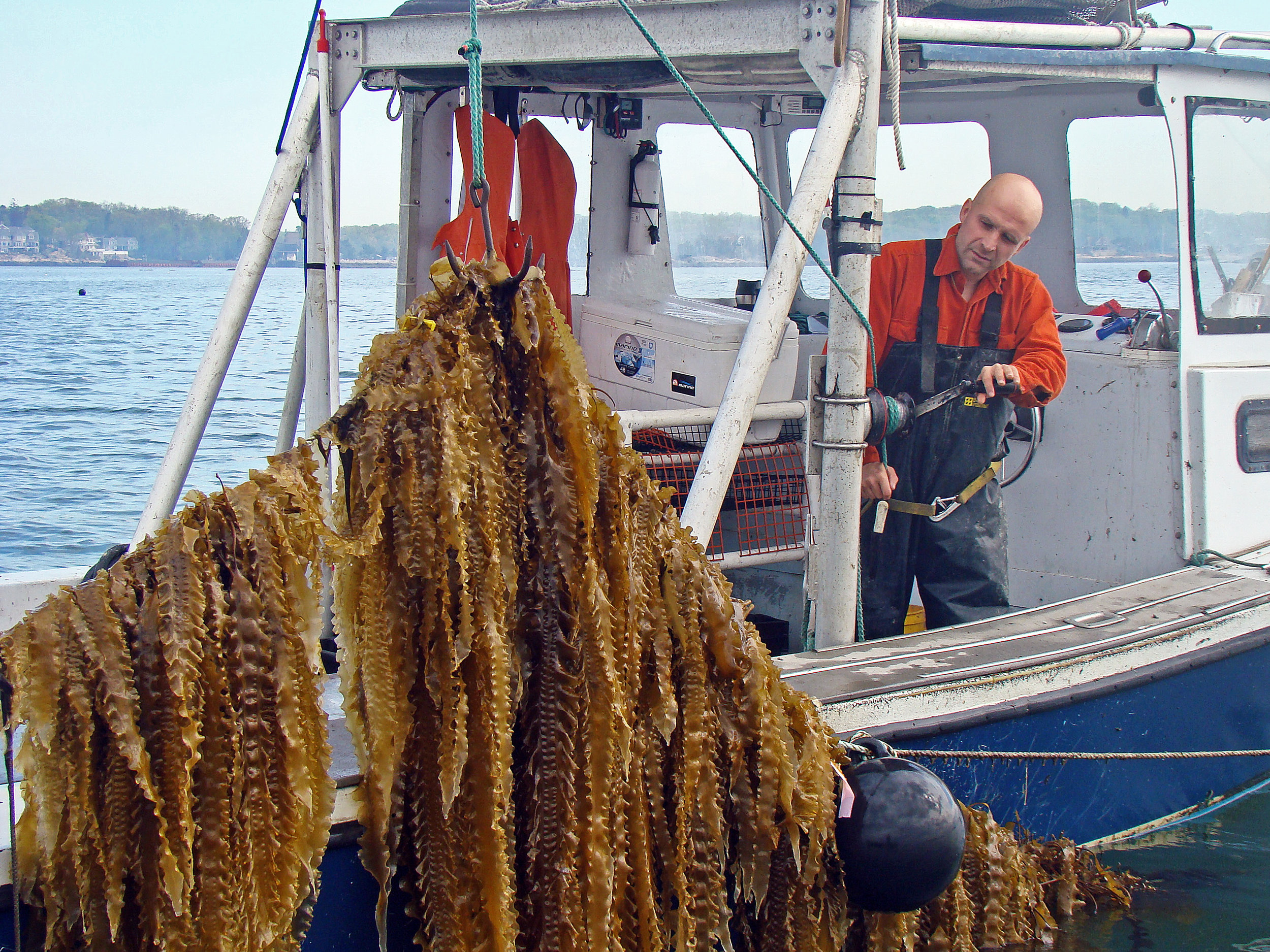
Similarly, bivalve shellfish require zero inputs to grow, making them a particularly sustainable protein source; no other animals or plants need to be grown and harvested to feed shellfish. For example, beef and pork require up to 10KG and 5KG of food respectively to produce 1KG of meat. Even farmed salmon and shrimp can require up to 2KG of feed for every 1KG of mass gained, which often involves harvesting wild fish to feed the farms. Thus, zero-input protein is critically important to support healthy diets and a sustainable future.
It is a commonly held assumption that sustainable seafood is more expensive for the consumer. While this can be true in many instances such as premium fish or crustaceans, restorative species like mussels and clams are particularly affordable sources of high-quality protein. Mussels also offer a well-rounded source of zinc, iron, vitamins A, C, and B12. As complete protein source, they contain all nine essential amino acids. (Bonus: try our Mussel and Kelp Pasta recipe!)
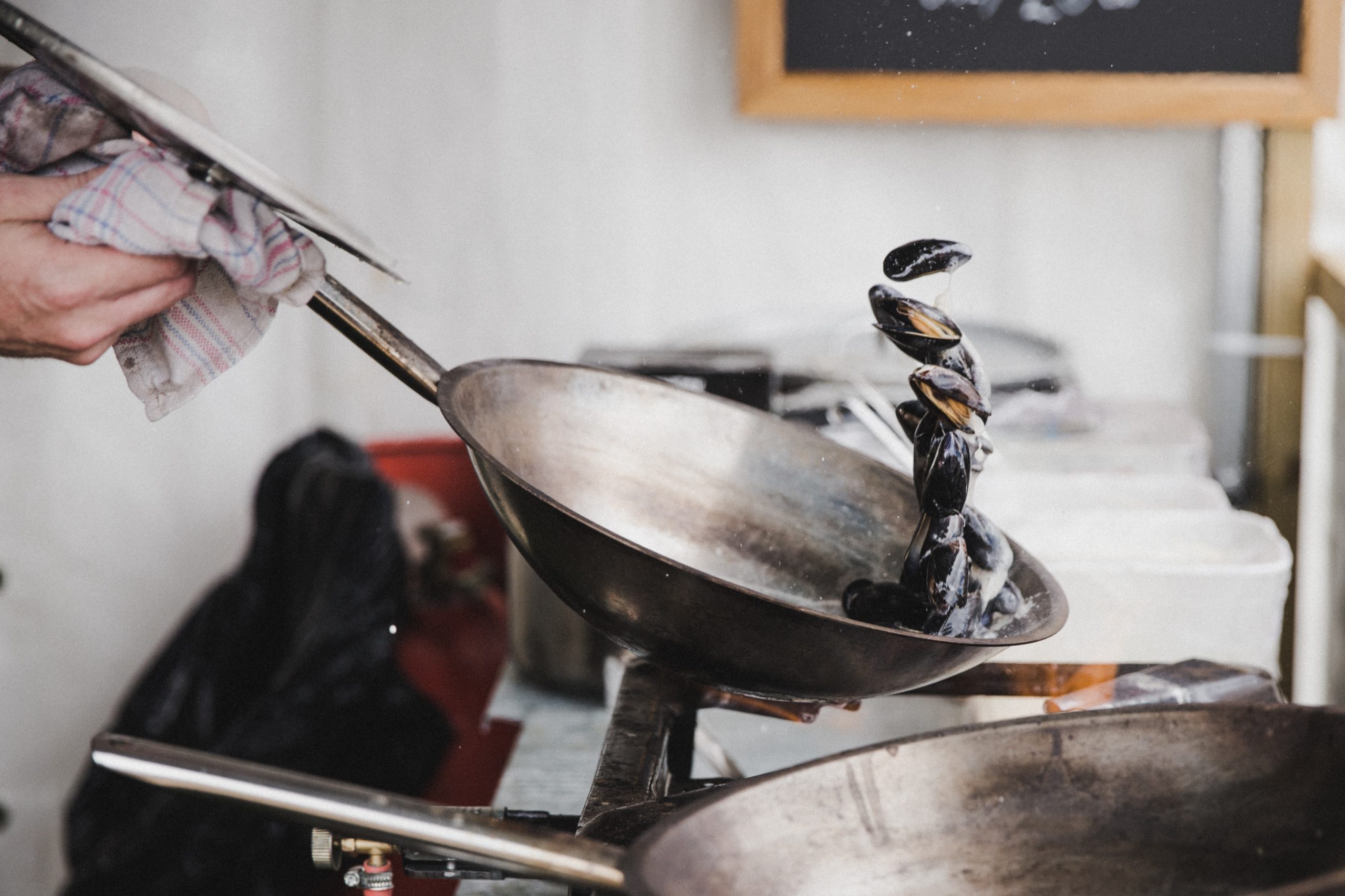
Choosing restorative species like seaweed and bivalve shellfish is an effective way to contribute to personal and environmental health, but it is important to check that they are sustainably sourced. Look for the Ocean Wise symbol or use the Ocean Wise Seafood Search engine to check whether the species you want to eat is a sustainable choice.
Full article printed in ripe. issue two. Get a copy at: www.keepitripe.com
This article was written by Ocean Wise Seafood Program Assistant Erika Bolliger
Photo Credits:
- The Water Brothers
- Shane Stanger
- Thimble Island Oysters
- Margo Brodowicz
Posted March 27, 2020 by Ocean Wise
